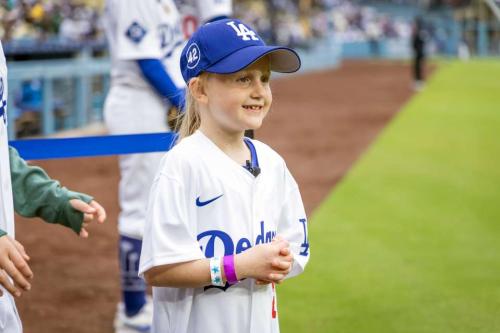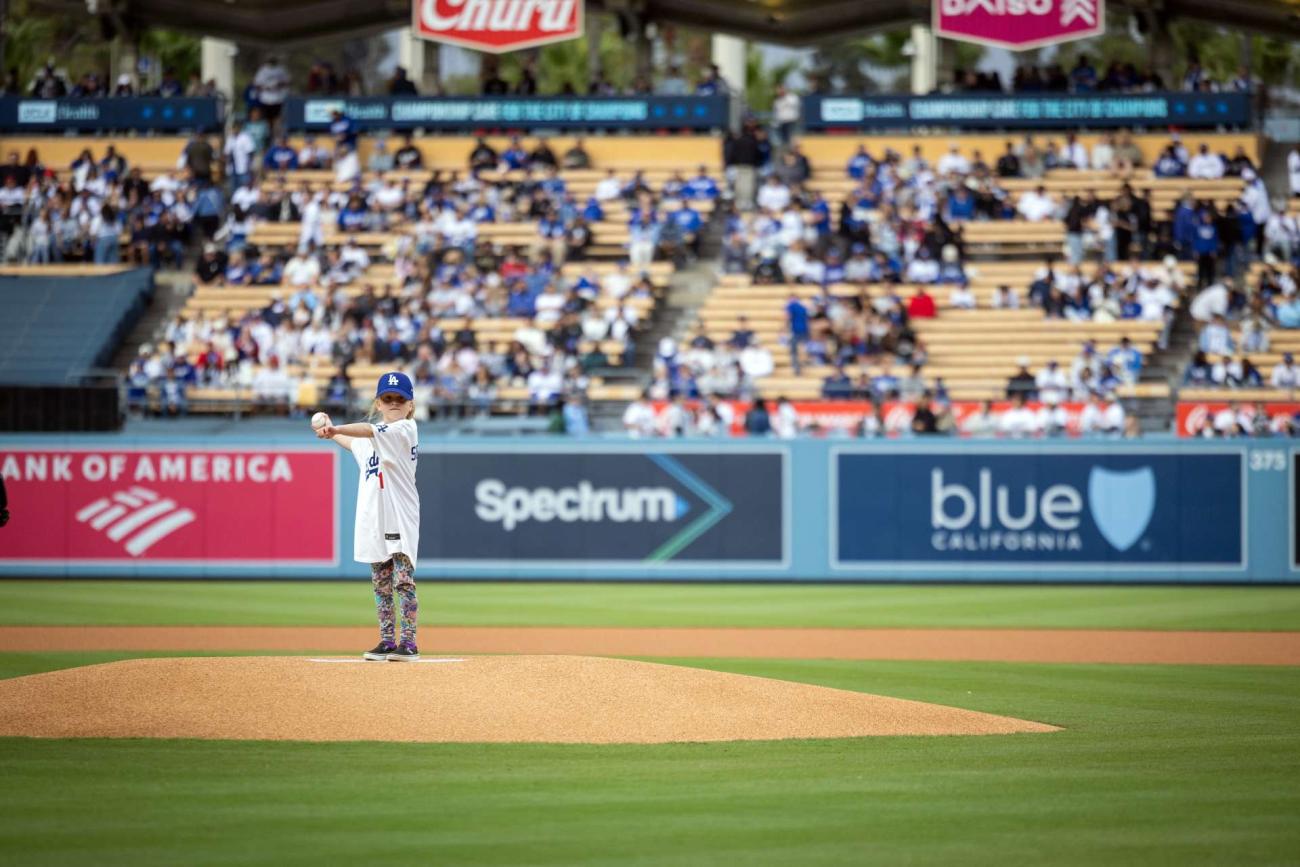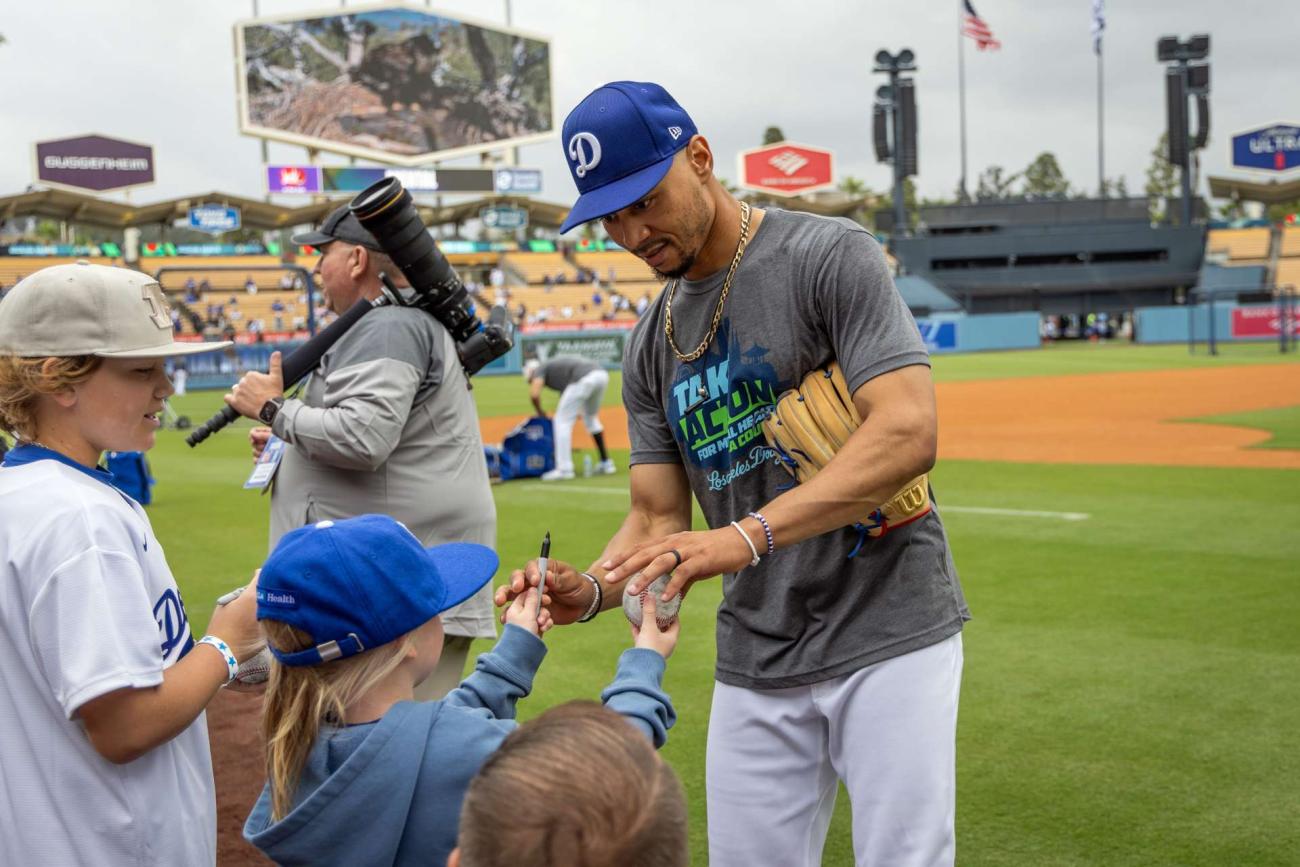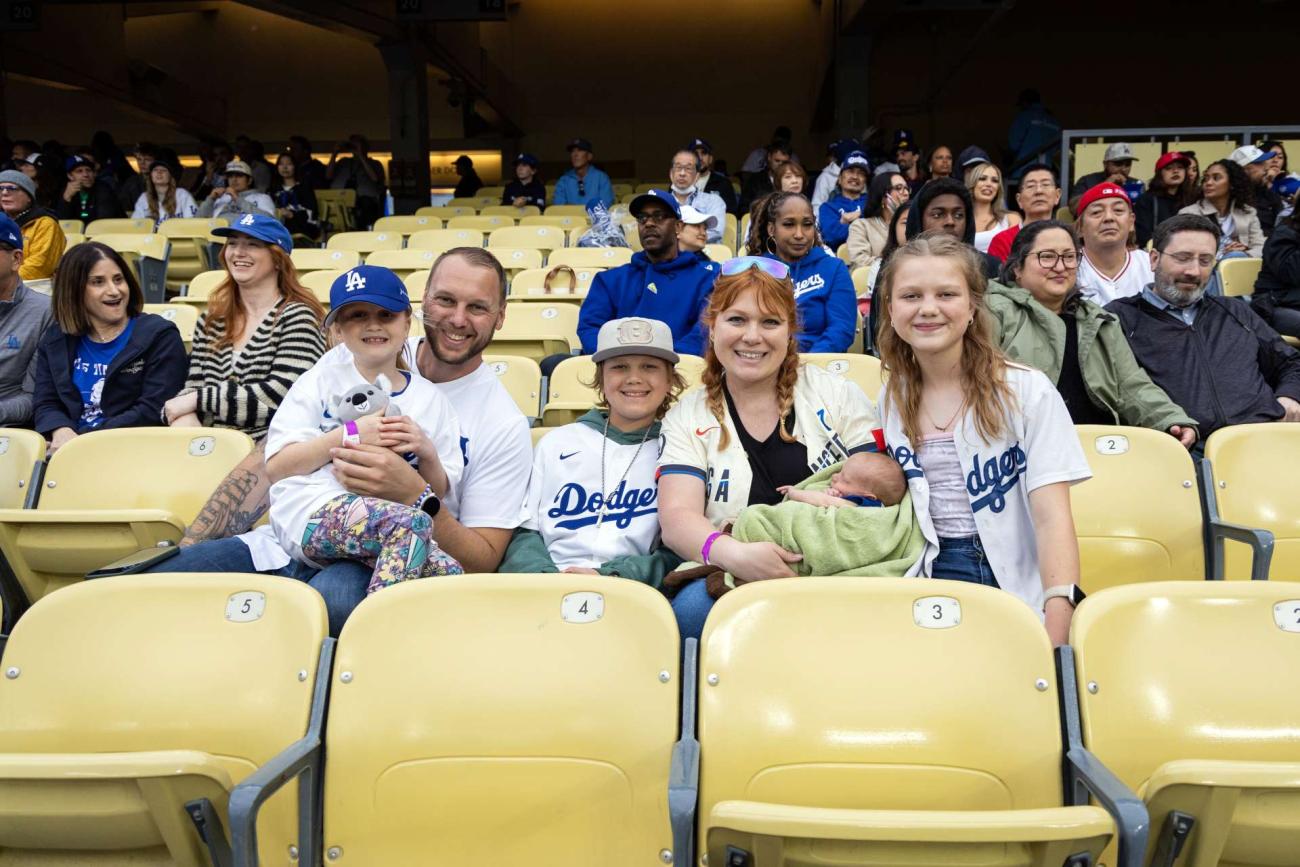
A young girl with SCID becomes an advocate for herself and others
Seersha Sulack’s childhood has been anything but ordinary.
For the first five years of her life, hospital rooms replaced playgrounds. Doctor visits took the place of playdates. Weekly injections became all too familiar. And avoiding exposure to germs always took priority.
Just days after birth, Seersha was diagnosed with ADA-SCID (adenosine deaminase-deficient severe combined immunodeficiency) — a rare genetic condition, also known as “bubble baby disease,” that impairs the immune systems of children.
Despite the constraints of her early life, Seersha remained driven by resilience and ambition. Now, at just 7 years old, she is a fearless self-advocate.
“Seersha is a firecracker. She speaks her mind and is really sweet,” says Donald Kohn, MD, a member of the Eli and Edythe Broad Center of Regenerative Medicine and Stem Cell Research at UCLA.
“Her energy is always up,” her mother, Shayla Sulack, adds. “She’s never met a stranger that she didn’t become friends with.”

That energy lit up Dodger Stadium on May 17, when Seersha was surprised with the opportunity to throw out the ceremonial first pitch and meet her favorite baseball player, Mookie Betts.
As she approached the pitcher’s mound and danced with excitement, Seersha was fulfilling a dream many would have thought impossible after her diagnosis.
Blood sample tells the story
Seersha was born Oct. 21, 2017, in a military hospital in Honolulu, Hawaii, the third child of the Sulack family.
The family’s jubilation quickly dimmed, however, when a routine blood test — including a standard SCID screening administered for all newborns in the U.S. — raised concern. A geneticist at the hospital discovered Seersha lacked T cells, a primary indicator of SCID.
With specialized expertise unavailable locally, the sample was sent to UCLA Health, a nationally recognized leader in immunodeficiency care, for further analysis. There, Manish Butte, MD, PhD, chief of Immunology, Allergy, and Rheumatology, conducted additional testing and confirmed Seersha’s SCID diagnosis.
At just 6 days old, Seersha was airlifted to Los Angeles on a military medical transport flight alongside her mother. To minimize her exposure, she was placed in an incubator at the front of the plane.
“It was terrifying to leave my husband and two other children not knowing when they were going to see her again. We had no idea what we were doing,” says Shayla Sulack, reflecting on the early days of treatment. The entire family eventually relocated to Tehachapi to be closer to Seersha’s UCLA Health team and relatives in the area.
Seersha’s parents feared their youngest child would not make it to her first birthday, but Dr. Kohn’s groundbreaking work in gene therapy — to repair the immune systems of children with SCID — would soon offer hope.
Treatment options for severe combined immunodeficiency disease
According to Dr. Kohn, Seersha inherited two faulty copies of the gene responsible for producing adenosine deaminase, or ADA, a critical enzyme needed by T cells to survive.
“We had no idea we were carriers until we had Seersha,” says Shayla Sulack.
Dr. Kohn and his team leveraged their expertise and explored different treatment options.
“Before treatments existed, SCID was uniformly a fatal disease in infancy. Babies would die within the first year of life from infections,” Dr. Kohn says. “Fortunately, today, that is no longer the case.”
There are two main treatment pathways for children with SCID: bone marrow transplant and gene therapy. Both treatments offer a potential cure, but each comes with unique risks and benefits.
Bone marrow transplants involve the transfer of healthy stem cells from a compatible donor — typically a family member — to the patient.
“If there is a sibling who is a perfect match and does not have SCID, then the chance of a successful transplant is 90-95%,” says Dr. Kohn.
However, this ideal scenario is relatively rare. With only a 25% chance that two siblings will be a perfect match, this option is not viable for many patients. That was the case for Seersha.
“When we first arrived at UCLA, we got our HLA typing done,” explains Seersha’s mom. “My husband and I were only half matches, and our older children were not matches for her at all.”
In these cases, doctors may need to look beyond immediate family. “We can either use the parent who’s half a match, or we can look for an unrelated donor,” explains Dr. Kohn.

But while 80%-90% of children survive these unrelated or half-matched bone marrow transplants, the procedures are often associated with higher risks, including graft-versus-host disease — where donor cells attack the patient.
As a result, to provide Seersha with her best chance for a cure, Dr. Kohn offered the family an alternative: gene therapy.
A unique approach to SCID
Gene therapy involves the process of removing a patient’s stem cells, correcting their genetic makeup, and reintroducing the cells back into the body. In clinical trials administered by Dr. Kohn and his team, gene therapy at UCLA Health has saved the lives of more than 50 babies to date.
“We like gene therapy for us, because we didn’t have to worry about rejection, graft-versus-host disease or anything else. If it didn’t work, we could do other options,” explains Shayla Sulack. “The doctors were also really great about explaining this to Seersha. Because at the end of the day, she's the one living with it, and we're just taking care of it.”
Dr. Kohn and his team extracted Seersha’s stem cells and inserted a normal ADA gene into them. They used a virus as a carrier to deliver the corrected gene into her DNA and reintroduced the modified cells back into her body.
“If gene therapy was not available, Seersha would have had to match with an unrelated donor or a parent,” Dr. Kohn says. “These treatments are much more complicated. They need more chemotherapy. They need immune suppression. So that would have been a longer, harder road.”
Moving forward
Although chemotherapy, medications, infusions and injections were not easy to endure, Seersha remained in high spirits.
“After treatment, we took Seersha home, and for her, it was just another normal day,” says her mother. “She was just ready. Every time we would go to visit the doctor, she would always ask, ‘Can I do more yet?’”
The answer soon became yes.
Seersha is now healthy, with her immune system responding well to the gene therapy treatment. She enjoys exploring the outdoors, playing at the park, learning through homeschool, trying new sports such as softball, and making friends.
“She’s a huge advocate for herself. She’s not shy. She just takes it all in stride,” Shayla Sulack says. “And the fact that she gets to enjoy whatever everybody else does, you know, going to the beach, or even going to the grocery store. It's just simple ups from here.”
“She has grown — you just see the maturation,” Dr. Kohn adds. “She was a baby when we treated her, and now, she’s become a young girl. It is a wonderful blessing to be able to improve people’s lives.”
At the same time, Seersha’s journey has become an inspiration to many. She and her family are dedicated to sharing her story, advocating for other children with ADA-SCID, and offering support to families navigating similar paths.

“There's just this huge community of SCID parents, and so, that's all we do, we try to advocate for them to get them the treatments that they need,” says Shayla Sulack.
Reflecting on Seersha’s journey, her mother shares heartfelt advice for families: “Don’t do it alone.”
“It is a terrifying moment when your child is sick,” she says. “You want to close the entire world out to protect your child, but accept the help that is there — because there is help and community.”
Dr. Kohn agrees. “It is a very difficult road, but there’s light at the end, as you can see with Seersha.
“UCLA Health has been a leader in gene therapy for childhood diseases like this,” he says. “The resources that we have — including the transplant program and the laboratories that can process these cells — are unique. We are really one of the few places in the country that offer these kinds of treatments.”
As Seersha’s family — which recently welcomed a new baby — prepares to move to Tennessee, their gratitude for UCLA Health continues to grow.
“We don't want to leave UCLA — we want UCLA to travel with us,” Shayla Sulack says with a smile. “Seersha has been with the UCLA Health team for almost eight years, and they've been with our family since then. They just feel like family.”

